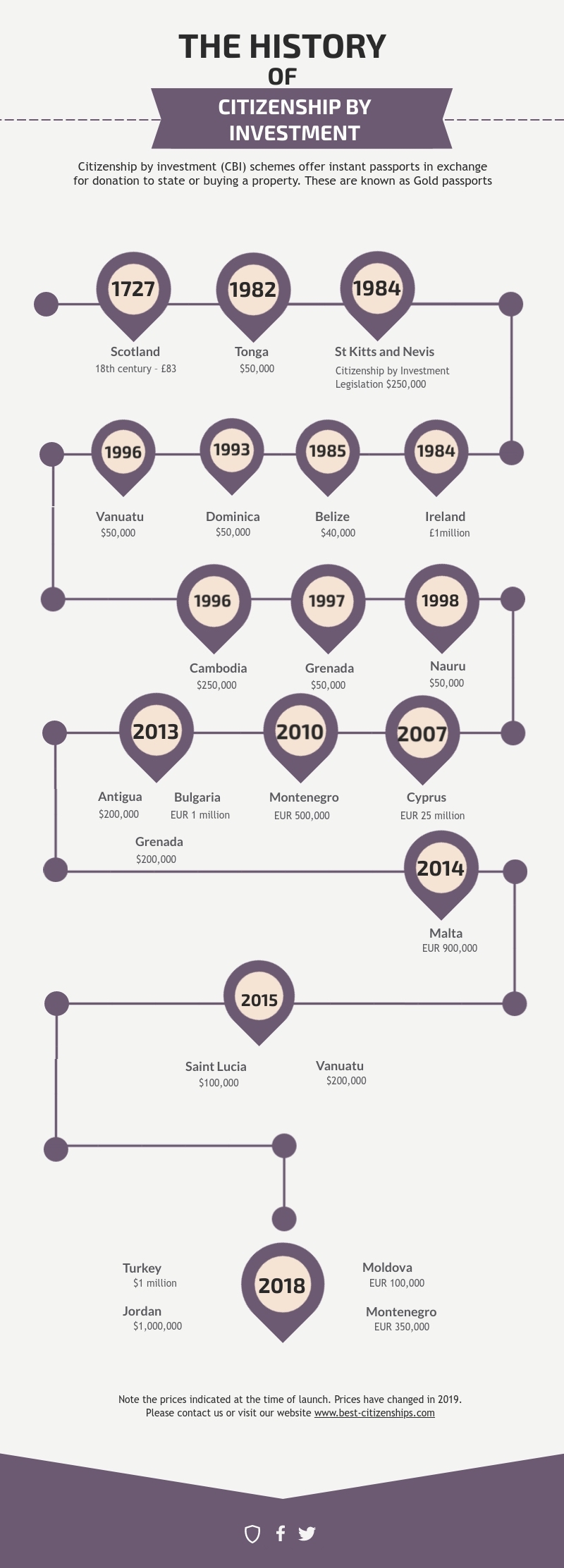Citizenship by Investment (CBI) schemes although have existed since 1980’s, only became popular after 2010. Today it is a $3 billion dollar industry, changing the way we think about citizenship.
During 18th century, the world’s first special citizenship-by-investment program prevailed in Scotland, a century before St Kitts started the idea, which continued long after the Union with England in the 18th century: a share investment of GBP 83 in the Royal Bank of Scotland allowed a foreign citizen to become a citizen of Scotland and, by extension, the UK.
In the 1980’s, St Kitts and Nevis pioneered the idea of citizenship by investment in 1984 and since then as many as 15 countries officially have active CIPs running as of 2018.
- Scotland 18th century – £83
- St Kitts and Nevis 1984 for $250,000
- Dominica 1993 for $50,000
- Belize 1985-2001 for $40,000
- Cyprus 2007 – EUR 25 million
- Ireland 1984-1994 for £1million, citizenship scheme closed in 2002 replaced with immigrant investor scheme
- Grenada 1997-2001 for $50,000 reopened in 2015 for $200,000
- Montenegro – 2010 (EUR 500,000) reopened in Oct 2018 for EUR 250,000
- Nauru 1998-2002 for $50,000
- Tonga 1982-1996 for $50,000
- Vanuatu 1996-1997 for $50,000 relaunched in 2016 for $200,000
- Moldova 2018 for EUR 100,000
From just two CIPs in 1990’s, proliferated to 14 countries implementing it and the concept of citizenship by investment is being widely embraced globally, despite criticisms.
CBI/CIP schemes have benefited a number of families, giving them a new life. mobility and freedom.
The infographic can be downloaded below.






